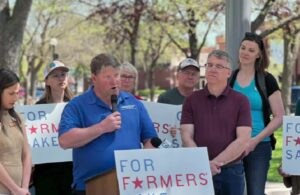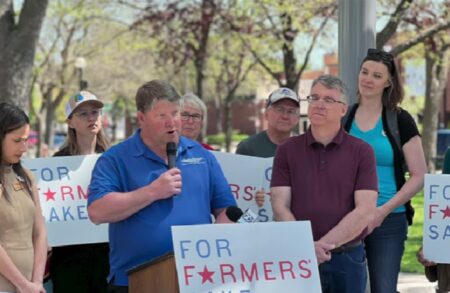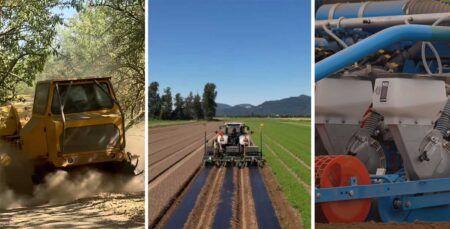By Jacob Orledge
A South Dakota lobbyist hinted this week that Summit Carbon Solutions’ plan to build a 2,000-mile carbon dioxide pipeline is on life support without the ability to secure easements through eminent domain.
Pipeline opponents in his state, according to David Owen, president of the South Dakota Chamber of Commerce before retiring earlier this year, have argued Summit is free to move forward with the carbon dioxide pipeline that would bring 18.5 million tons of carbon dioxide to North Dakota annually. Some have said that while the company can no longer use eminent domain to secure the pipeline route without landowners’ consent, Summit could obtain voluntary easements for 100% of the project’s path.
“I like that fantasy,” Owen said of constructing the pipeline without use of eminent domain. “I wish that were true. But it’s not.”
In addition to facing the obstacle of South Dakota’s law against eminent domain, Summit also still needs a permit from South Dakota’s Public Utilities Commission for the project to move forward.
Summit proposes to build a network of pipelines in five states to capture carbon emissions from ethanol plants. The main portion of the pipeline would run through South Dakota.
Joshua Haiar/South Dakota Searchlight
Owen was speaking Tuesday on a panel at the Greater North Dakota Chamber’s annual policy summit. He warned the audience that South Dakota’s opposition to eminent domain for carbon dioxide pipelines, which he attributed to the strain of political populism shared by both states, might be “contagious.”
Jessica Bell, Rainbow Energy vice president and former Republican state lawmaker who moderated the panel discussion, attributed this opposition to “horseshoe politics.”
“The opposition comes not only from those on the far left who frame these projects as perpetuating fossil fuel use, but also from the far right who view them as government overreach,” Bell said. “While these groups rarely agree on much they do converge here in trying to stop development. For conservatives in particular, leadership on energy policy cannot always be simply saying ‘no’ to something and everything.”
Owen pushed back on the idea that property owners “gathered in a barn” and organically built a successful opposition to use of eminent domain.
“Landowners teamed up with environmental groups, who supplied a lot of money, and they hired damn good political talent,” said Owen, who hopes this is only a “pause” and South Dakota will return to the table down the road.
Owen was joined on the panel by Brian Kalk, chief research officer at the Energy and Environmental Research Center and a former member of the Public Service Commission, and North Dakota Rep. SuAnn Olson, a Republican from Baldwin.
Courtesy of the North Dakota Legislative Assembly
Olson noted some of the opposition to Summit’s pipeline has been created by mixed messaging from the company and government officials. The pipeline was “adamantly described,” Olson said, as a way to deliver CO2 to a storage facility in North Dakota. But Summit officials have also said the pipeline could be used in the future for enhanced oil recovery if a customer developed an agreement with Summit.
Enhanced oil recovery is under development in order to extract a greater percentage of North Dakota’s oil, extending the life of Bakken wells. One technique being researched would use carbon dioxide to repressurize underground reservoirs. Bell noted current estimates require 100 million tons of carbon dioxide annually, far more than is produced in North Dakota, to make it happen.
The pipeline route permit approved by the North Dakota Public Service Commission specifies that the CO2 would go into permanent underground storage.
“Even the 100 million tons annually that’s needed is built on lots of assumptions,” Olson said. “None of us, if you want to be accurate, can be sure exactly what that’s going to be and where it’s going to come from.”
Kalk suggested it was possible for North Dakota and the United States to become “third world countries,” like those he said he visited as a U.S. Marine logistics officer for 20 years.
“That’s what some of these other countries are because they don’t have progressive thinking about building pipelines, about building a power grid,” said Kalk. “I think North Dakota right now is kind of in that spot where we have done great things, but what’s next?”
North Dakota Attorney General Drew Wrigley said during a radio interview last week he’s researching what legal options the state could have to challenge South Dakota’s law against eminent domain.
North Dakota Monitor reporter Jacob Orledge can be reached at [email protected].
North Dakota Monitor is an affiliate of States Newsroom, the nation’s largest state-focused nonprofit news organization, supported by grants and donations. The Monitor’s editorial decisions are made locally by our team of North Dakota journalists. The Monitor retains full editorial independence.












